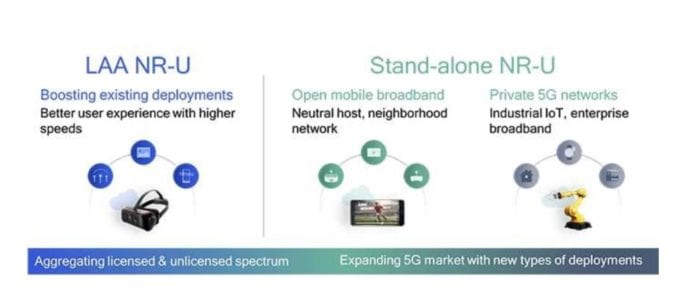3GPP working on 5G NR for 5 GHz and 6 GHz
The use of unlicensed spectrum with LTE deployments has had a significant impact on the telecoms industry–operators can use Licensed Assisted Access to bolster network capacity and non-carrier interests can use MulteFire to operate their own networks for IoT-type implementations. So, with early 5G NR deployments this year followed by more in 2019 and beyond, what’s the outlook for incorporating unlicensed spectrum in the 5G New Radio specification?
Earlier this month at a plenary meeting in Sorrento, Italy, 3GPP members approved making 5G NR-U a work item slated for inclusion in Release 16.
“Now that there’s a work item, it’s the phase where the specification starts and is put together,” Qualcomm VP of Technical Standards Lorenzo Casaccia said in an interview with RCR Wireless News. “The next phase is to do the actual work, the detailed work, and we’ll do that in 2019. Eventually the technology will be included in the specification.”
The current work items are focused on the 5 GHz and 6 GHz bands and will eventually be expanded to include high-band frequencies like 60 GHz and above, although Casaccia said, given the timeline, that will have to wait for Release 17 or Release 18.
There are two primary modes of operation for NR-U–carrier aggregation and standalone.
The first, Casaccia said, is analogous to LAA for LTE. “You have an anchor in licensed spectrum, then you add an additional carrier in unlicensed spectrum. Conceptually it is the same thing as we’ve done in LTE.”
He said standalone NR-U can be thought of as the 5G NR answer to MulteFire for LTE; it’s worth noting that MulteFire was standardized by the MulteFire Alliance, not 3GPP.
“We are defining 5G that can be operated in unlicensed spectrum alone without restrictions and without any anchor in licensed spectrum. It’s really the first time that 3GPP defines a technology that can be run in just unlicensed spectrum. It’s really a major, major milestone for 3GPP…As a technology it’s a major milestone for the cellular industry to really make the jump and make cellular technology that just goes into the unlicensed spectrum. From a business point of view, it opens up possibilities for local deployment, private networks, many other use cases.”
Fore more info on NR-U, check out a recent blog post from Casaccia.

